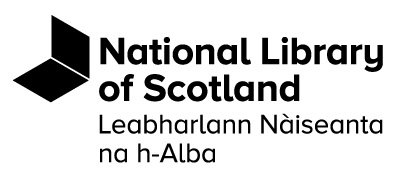Frederick Douglass was one among hundreds of nineteenth-century US born, black freedom-fighters, enslaved and free, who campaigned for social justice in Edinburgh. Here are the life stories of just some of these inspirational women and men who made Edinburgh their home during their transatlantic visits.
Browse people
Hover mouse over people below to zoom map to places associated with them
Ira Aldridge (1807-1867) - Adelphi Theatre, 1 Little King Street

A world-famous and critically acclaimed actor, New York City born Ira Aldridge became internationally celebrated for his theatrical performances. During one of his many celebrated tours of Scotland, he performed as Shakespeare’s Othello and Shylock at the Adelphi Theatre in the city.
William Wells Brown (1814-1884) - Edinburgh Total Abstinence Society, 52 Nicolson Street

William Wells Brown was a formerly enslaved man turned dramatist, novelist, autobiographer, historian, activist, orator and antislavery radical. He travelled extensively in Europe, including his repeated sojourns in Scotland. As per Douglass’s jubilation that Edinburgh was a city of racial egalitarianism, Brown who also resided at the York Hotel reported, "I met a large number of the students on their way to the college, and here again were seen coloured men arm in arm with whites. The proud American who finds himself in the splendid streets of Edinburgh, and witnesses such scenes as these, can but behold in them the degradation of his own country, whose laws would make slaves of these same young men."
William Wells Brown (1814-1884) - Old Infirmary, Infirmary Street
William Wells Brown was a formerly enslaved man turned dramatist, novelist, autobiographer, historian, activist, orator and antislavery radical. He travelled extensively in Europe, including his repeated sojourns in Scotland. As per Douglass’s jubilation that Edinburgh was a city of racial egalitarianism, Brown who also resided at the York Hotel reported, "I met a large number of the students on their way to the college, and here again were seen coloured men arm in arm with whites. The proud American who finds himself in the splendid streets of Edinburgh, and witnesses such scenes as these, can but behold in them the degradation of his own country, whose laws would make slaves of these same young men."
Ellen Craft (1826-1891) and William Craft (1824-1900) - Cannon's Hotel, 11 South St. Andrew Street - 1851
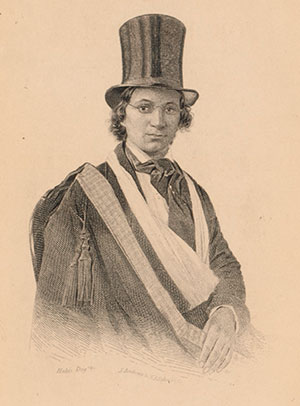
In December 1848, Ellen and William Craft made history by their sensational method of escaping plantation slavery in Macon, Georgia: Ellen Craft assumed male attire and passed as a white slaveholder travelling with her enslaved servant, her disguised husband, William Craft. In popular demand on the transatlantic antislavery circuit after they published their life story, Running a Thousand Miles for Freedom, the Crafts stayed at Cannon’s Hotel in St Andrew Square with William Wells Brown while they delivered a series of antislavery lectures to packed audiences.
Jesse Ewing Glasgow Jr. (c.1837-1860) - 10 Hill Place - 1860
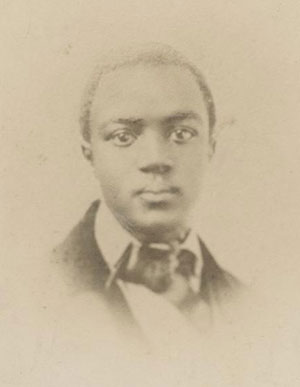
Jesse Ewing Glasgow Jr. was born free in Philadelphia and enrolled as ‘one of the brightest of her intellectual lights’ at the University of Edinburgh in 1859. Glasgow Jr. tragically died of consumption before he was able to graduate but not before he won a litany of university prizes and authored John Brown, or The Harper’s Ferry Insurrection (1860). A radical tract, here he included his heartfelt plea that readers in Scotland "may be incited to do something towards securing the coloured man’s freedom." His father, Jesse Glasgow, was one of the signers of Frederick Douglass’s appeal, "Men of Color to Arms", in which he recruited Black combat soldiers to the Union cause during the Civil War while Douglass himself was in Edinburgh lecturing on John Brown at the same time Jesse Glasgow was living there as a student. The question remains: did they meet? Jesse Glasgow died at 10 Hill Place, Newington, on December 20, 1860.
Josiah Henson (1789-1883) - 27 Brunton Road (London Road) - 1846
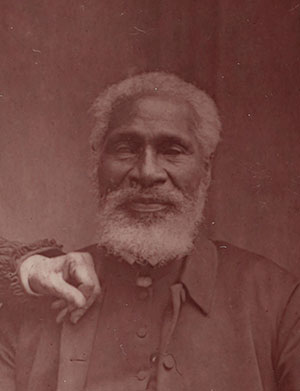
A self-emancipated enslaved man turned author, orator, antislavery and civil rights campaigner, Josiah Henson was born in Maryland and died in Canada. On his first visit to Edinburgh in 1851 he asked for financial support for "an educational institution for colored children in Dawn", a newly freed settlement in Canada. On his second visit in April 1877, Henson delivered a lecture at the United Presbyterian Church on London Road. An eye witness recounts, "The church was crowded in every part, hundred standing", as Henson informed his listeners he had been educated in the "University of Adversity".
Frederick J. Loudin (1836-1904) - Carrubers Close Mission, 65 High Street - 1899

World-famous as one of the Fisk Jubilee Singers, an internationally renowned group of musicians who performed African American spirituals to raise funds for Fisk University, a historically Black University in Nashville, Tennessee, Frederick J. Loudin (pictured here) was not only an inspirational singer but a social justice campaigner and activist. During a visit to Edinburgh, he, like Ida B. Wells-Barnett spoke at a "crowded meeting" at the Carrubers Close Mission and condemned the atrocities of lynching. As a reporter remembered, "Loudin, manager of the Fisk Jubilee Singers, spoke of the reign of lawlessness... whereby negroes under the barest suspicion of crime were being either lynched or burned alive". A blistering social and political commentator, Loudin brooked no dissent by urging: "The state of matters now existing could not go on much longer, for the coloured people had stood it up to the limit of their ability, and they were becoming desperate, as they were determined to have the rights of manhood".
Sarah Parker Remond (1815-1894) - Brighton Street Church, Brighton Street

Born into a free Black community in Salem Massachusetts, Sarah Parker Remond gave a lecture at the invitation of the Edinburgh Ladies’ Emancipation Society on October 5 1860 at Brighton Street Chapel. A resounding success, her lecture was "crowded to the door by a most respectable audience, numbering upwards of 2000" and she was commended for deepening "our abhorrence of the sin of Slavery".
Ignatius Sancho (1729-1780) - 8 Queen Street
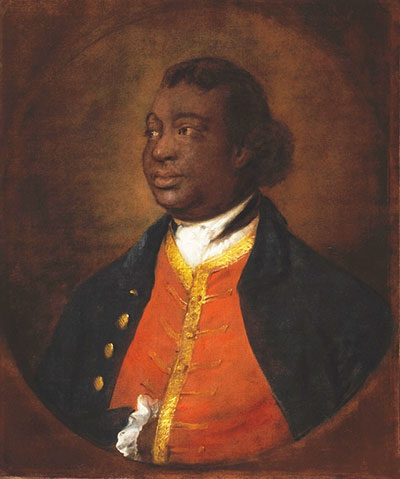
A radical abolitionist, composer, actor, writer, and a pioneering theorist of art and literature, Igantius Sancho was long thought to have been born on a slave ship on its transatlantic voyage from the African continent to the Caribbean. While Brycchan Carey’s pioneering research suggests that this is “unlikely”, Sancho’s “origins were African”, a biographical reality that was celebrated in a public collection of correspondence titled, Letters of the Late Ignatius Sancho, An African, published in London in 1784 a few years after his death. In Letter VIII he writes from Dalkeith on July 16 1770, he confides, “We came home from our Highland excursion last Monday night, safe and well--after escaping manifold dangers.” Sancho then goes on to tell of his and his friends’ experiences in the city: “We paraded to Edinburgh last Friday in a post coach and four;--H---- D----, Mrs. M----, house-keeper, and self, were the party;--we saw the usual seeings, and dined at Lord Chief Baron's.” The private residence of Lord Chief Baron Robert Orde (1700-1778), a lawyer, Member of Parliament, and Baron of the Exchequer for Scotland, was 8 Queen Street.
Amanda Berry Smith (1837-1915) - John Knox House, 43-45 High Street - 1870
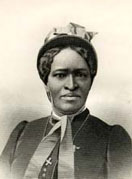
Born into slavery in Maryland, Amanda Smith lived a new life in freedom as a renowned evangelist. In An Autobiography: The Story of the Lord's Dealings with Mrs. Amanda Smith the Colored Evangelist published in 1893 she shared stories of her visit to the city: “I was very glad to go. The Scotch ladies... are so well versed in the history of their country that they can with ease detail almost any event of any time.”
Samuel Ringgold Ward (1817-1866) - Albany Street Chapel, 24a Broughton Street
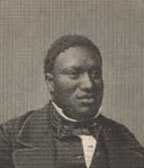
A self-emancipated individual who had been born into slavery in Maryland, Samuel Ringgold Ward became a world-renowned author, activist, antislavery radical and social justice campaigner. In his Autobiography of a Fugitive Negro, he named and shamed Scottish slave traders as "severely exacting and oppressive" and was unequivocal in his condemnation, noting that the “names of their perpetrators, would be the largest, blackest roll and record of infamy that ever disgraced the Scottish name or blighted Scottish character." During his antislavery lecturing tour of Edinburgh he took a “tour of Holyrood House” which he never forgot: “Our guide... made some stupid blunder about the lock of the door, so that he could not unfasten it to let us out...I took an old battle-axe, affirmed to be 600 years old... and broke the door open, effecting deliverance from durance for myself and party.”
Ida B. Wells-Barnett (1862-1931) - Carrubers Close Mission, 65 High Street - 1893

As a woman born into slavery in Memphis, Ida B. Wells-Barnett became one of the most famous anti-lynching and civil rights campaigners and journalists in US history. Armed with letters of introduction from Frederick Douglass, her staunch supporter, Wells-Barnett visited Scotland in 1893. She delivered speeches denouncing the barbarous practice of “Lynch Law” at Carruber’s Close Mission and at the Edinburgh Ladies’ Emancipation Society at 5 St. Andrew Square.
Ida B. Wells-Barnett (1862-1931) - National Bible Society, 4-5 St. Andrew Square - 1893
As a woman born into slavery in Memphis, Ida B. Wells-Barnett became one of the most famous anti-lynching and civil rights campaigners and journalists in US history. Armed with letters of introduction from Frederick Douglass, her staunch supporter, Wells-Barnett visited Scotland in 1893. She delivered speeches denouncing the barbarous practice of “Lynch Law” at Carruber’s Close Mission and at the Edinburgh Ladies’ Emancipation Society at 5 St. Andrew Square.


